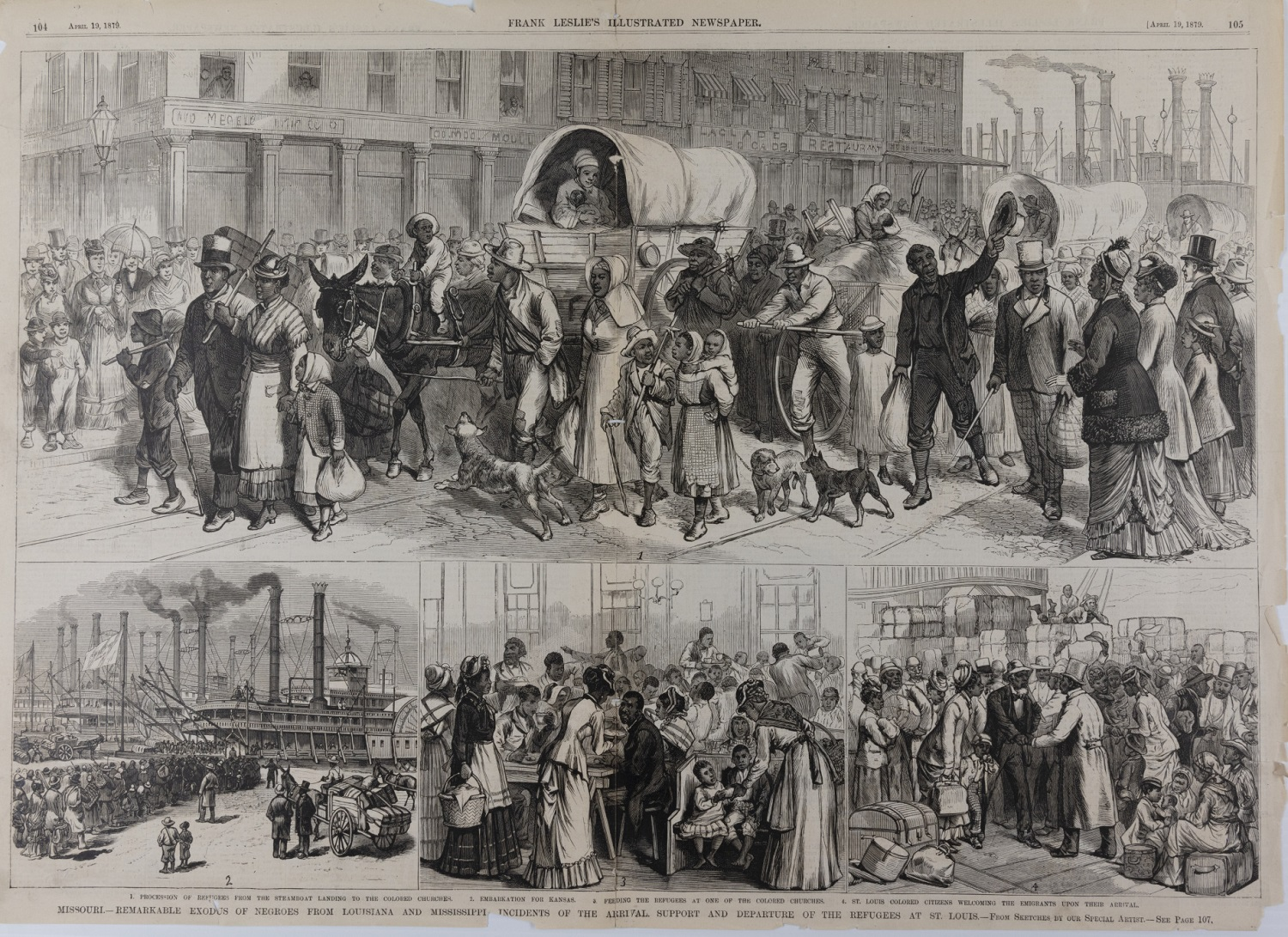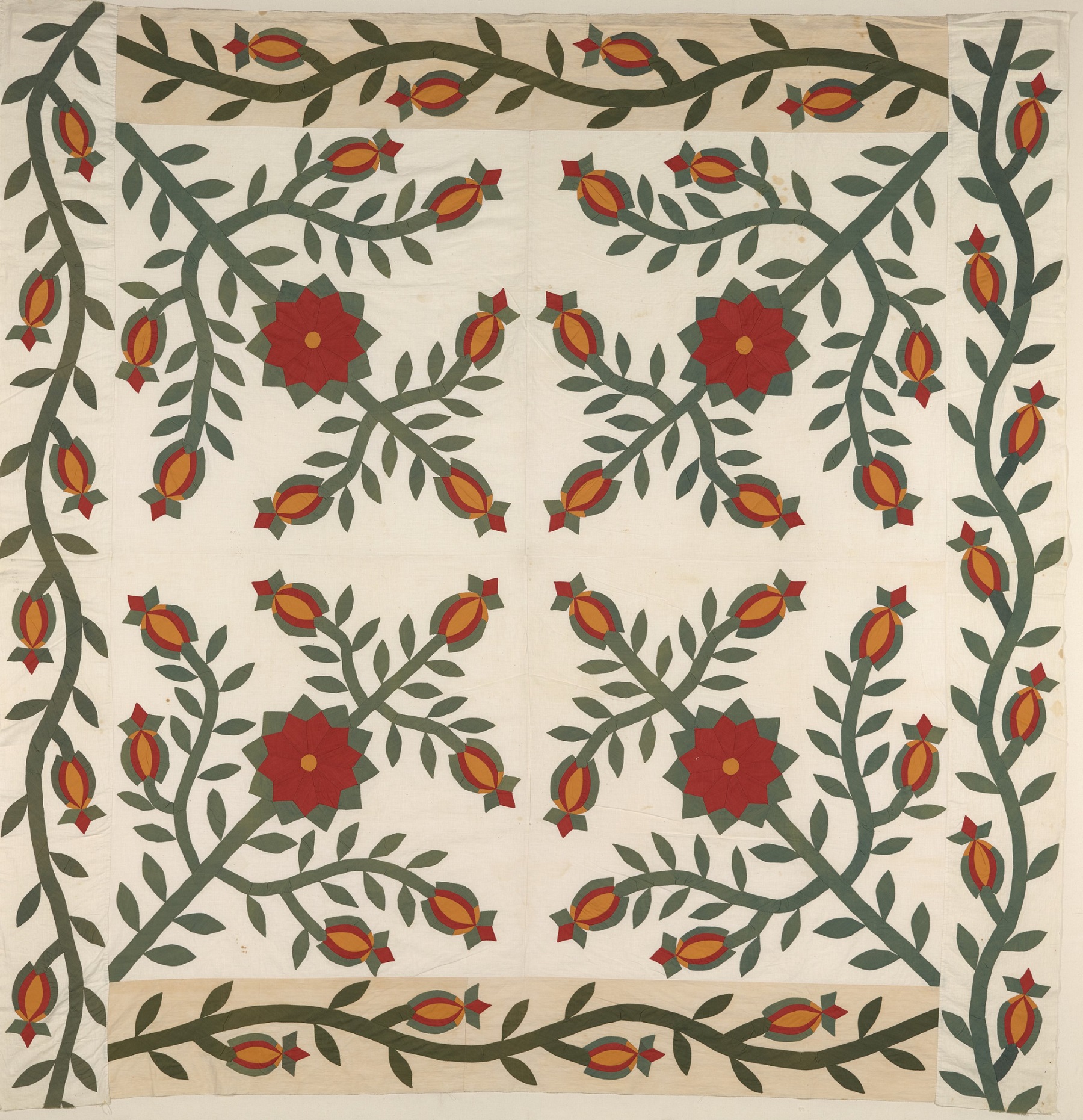Illustration of Exodusters passing through St. Louis on way to Kansas
“Missouri.–Remarkable Exodus of Negroes from Louisiana and Mississippi. Incidents of the Arrival. Support and Departure of the Refugees at St. Louis,” Frank Leslie’s Illustrated Newspaper, April, 19, 1879. Missouri Historical Society.
Background
In the 1870s, many Black Americans left the South and moved west to flee racial violence and inequality under the developing system of Jim Crow. Thousands moved to the Great Plains, particularly Kansas. Kansas had a long history of abolitionism, which made it attractive for Black citizens who felt unsafe in the post-Reconstruction South. These migrants were referred to as “Exodusters,” a reference to the Book of Exodus from the Bible. In the Book of Exodus, Moses leads his people out of slavery and into the promised land.
About the Image
This image appeared in Frank Leslie’s Illustrated Newspaper in the 1870s. It shows the warm welcome Black Americans in St. Louis, Missouri, gave to new arrivals from the South. St. Louis was the first stop for many Exodusters on their way to Kansas. Many women and children are included among the Exodusters. And Black women are shown providing food to the travelers.
The quilt was either made by Amanda Lewis or her daughter, Mary Jane. Amanda Lewis was a formerly enslaved woman who moved with her family to Nicodemus, Kansas, in the 1880s. Exodusters from Kentucky established Nicodemus in 1877, an all-Black town in Kansas. It was the largest of many such towns in the state. The quilt’s intricate floral design shows that Black women were talented artisans who used their skills to create new lives in the West.
Vocabulary
- abolitionism: Supporting the end of slavery.
- Book of Exodus: The second book of the Bible.
- Exodusters: Black Americans who moved from the South to the Midwest to flee racial inequality and violence after Reconstruction.
- Jim Crow: A system of state and local laws that restricted the rights and freedoms of Black Americans, particularly in the South.
Discussion Questions
- Who were the Exodusters? Why did they leave the South for states like Kansas?
- Why would Black mothers decide to leave the South for the Great Plains with their families? What do you think they hoped to find there for their children
- Examine the image. How did Black residents of St. Louis welcome the Exodusters? How do you think white residents responded to them?
- Why is it important to study objects like this quilt? What can it teach us about Black women Exodusters?
Suggested Activities
- APUSH Connection: 6.8: Immigration and Migration in the Gilded Age
- Closely examine the image by printing and cutting out the four smaller images and have students analyze one of the four images in small groups.
- Explore life on the frontier for women by pairing this resource with the diary of an Arizona teacher and the life stories of Mary Ellen Pleasant and Polly Bemis.
- Consider the choices Black women faced in deciding whether to stay in the South or move North or West. Combine this resource with Black factory workers and Black domestic workers. What opportunities and challenges did each of these options provide for Black working-class women?
- For a larger lesson on the experiences of Black women during this time, combine this resource with an article about a factory strike in Atlanta, a study on Black domestic workers, Ida B. Wells’s pamphlet on Jim Crow, a speech from a Black women’s club convention, an Aunt Jemima advertisement, experiences of Black convicts, and the life stories of Mary Ellen Pleasant, Josephine St. Pierre Ruffin, and Edmonia Lewis.
Themes
IMMIGRATION, MIGRATION, AND SETTLEMENT








